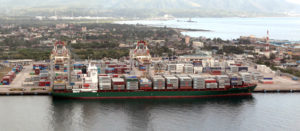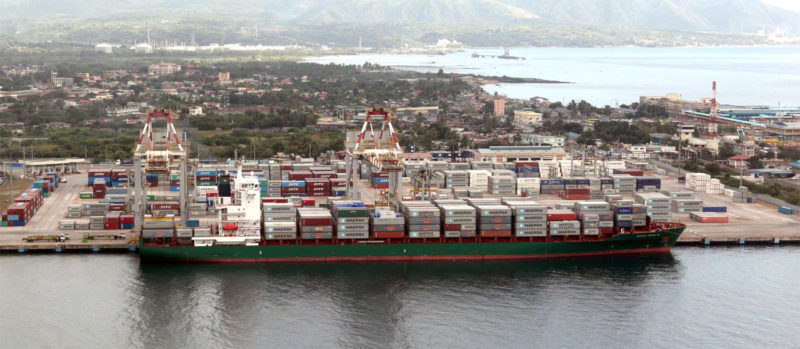 Batangas Container Terminal (BCT) has steadily sustained higher volumes, handling 85,000 twenty-foot equivalent units (TEUs) of international containers for the first seven months of the year, 4.9% higher than the 81,000 TEUs recorded in the same period last year.
Batangas Container Terminal (BCT) has steadily sustained higher volumes, handling 85,000 twenty-foot equivalent units (TEUs) of international containers for the first seven months of the year, 4.9% higher than the 81,000 TEUs recorded in the same period last year.
In a statement, BCT operator Asian Terminals Inc. (ATI) attributed BCT’s volume growth to its expanding list of customers in Calabarzon (Cavite, Laguna, Batangas, Rizal and Quezon) such as electronics giants from Japan, food and beverage conglomerates, retailers, agri-exporters, and leading car manufacturers.
The January-July volume also brings the terminal closer to attaining another record performance year after handling over 130,000 TEUs in 2015, ATI said. BCT’s container traffic was given a boost in 2014 when massive congestion at the Manila port pushed shippers to look for alternative gateways.
The port operator noted that BCT is accessible 24/7 to industrial zones located 10 to 50 kilometers away through modern highways and seamless road infrastructure. A number of third-party truckers accredited by local government units also offer reliable services at competitive rates.
Seven freight services call Batangas weekly, while another docks fortnightly, providing shippers a direct and fast link to Hong Kong, Singapore, Taiwan, Japan, Thailand, Vietnam, Indonesia, and other global trade hubs.
Aside from proximity and connectivity, ATI said another edge of the Calabarzon trade gateway is its modern port systems and streamlined processes.
In 2014, BCT upgraded to Navis Sparcs, the system which powers the biggest marine terminals in the world. This, ATI noted, enhanced port efficiency and productivity, bannered by BCT’s record production of 30 gross moves per crane per hour (GMPH) in July 2015, putting it on a par with world-class container hubs like Singapore and Hong Kong.
GMPH is a measure of the number of boxes that cranes move from ship to shore in an hour. The efficient handling of vessels at berth results in faster ship turnaround and quicker delivery of cargoes to consignees. Thus far, BCT’s production is over 28 GMPH—or above the industry’s 25 GMPH average—and reached a high of 30 GMPH for several months.
ATI said fast customs processing is likewise assured by Bureau of Customs (BOC)-Batangas, which follows global standards in quality service. BOC Batangas is the only unit in the entire customs bureau to obtain the ISO 9001:2008 certification for quality management. The Philippine Export Zone Authority and the Philippine Ports Authority also provide a supportive business environment, ATI said.
“With all these in place, shippers are able to pick up and deliver boxes in BCT within 30 minutes of truck entry,” the port operator said.
In support of future growth, ATI has begun to expand BCT by extending the port’s quay length and crane rails to reach 600 meters in order to accommodate the deployment by 2017 of two quay cranes, four rubber-tired gantry cranes, and other port facilities and equipment.





